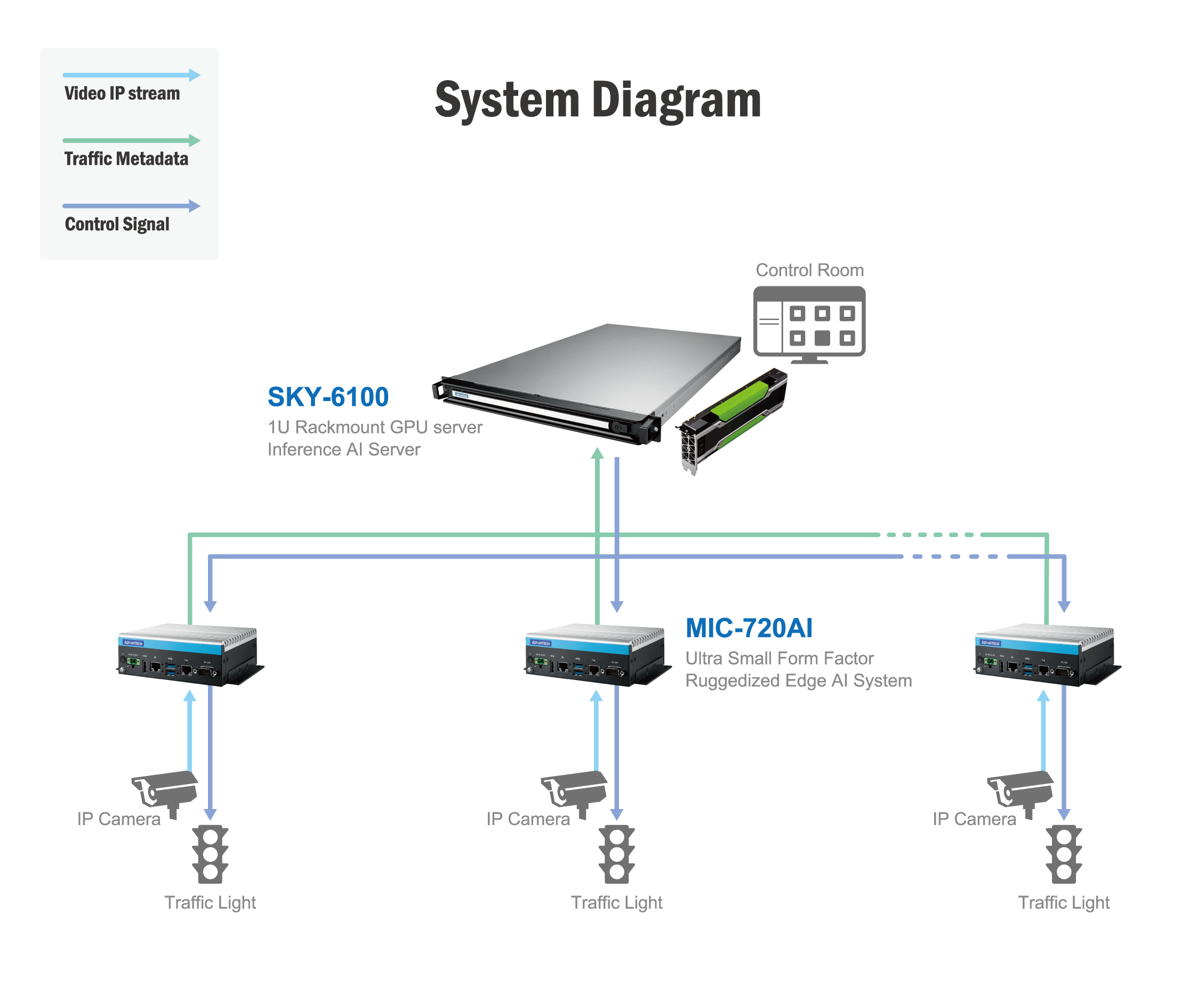Intelligent Video Traffic Monitoring for Self-Adaptive Traffic Signal Control System
Background Information
Cities consist of roads and streets where all types of vehicles: pedestrian, bicycles, cars, and buses intersect. Traffic signal controls at intersections highly impact vehicle activity, conflicting movement and capacity. To achieve an effective transportation solution that maintains safety but also permits better traffic throughput, accurate traffic monitoring is needed to understand vehicle movements and flows throughout the city.
Traditional detection methods like ultrasonic, microwave radar, or infrared sensors either cost too much to deploy or lack the necessary recording detail. Video detection systems can overcome these disadvantages and can, with artificial intelligence (AI), generate essential traffic metadata. Information such as vehicle numbers, direction, waiting times etc. can all easily be acquired using video equipped with edge-based AI systems. It is a revolution in traffic monitoring.
System Requirements
The AI traffic monitoring solution included a self-adaptive traffic light system, edge AI system, and a backend AI inference server; all integrated into a carefully designed dataflow. The edge AI system grabs video streams from the IP cameras and then analyzes the content using inference. Power-over-Ethernet (PoE) supplies power to the IP cameras through a general purpose RJ45 LAN port, which makes it much easier to deploy cameras in remote areas. Low power consumption, fanless design, and wide-temperature functions were necessary to meet the requirement as a road-side system since the equipment would be hung on traffic signal structures to control traffic lights.
After traffic monitoring is completed at the road-side, the raw data will be transmitted back to the central control room. The AI inference server leverages high processing power to meet the massive inference processing requirements and to be able to analyze the set of metadata via pre-trained deep learning models. Then, the self-adaptive traffic lights can be managed from the traffic center control room.

System Description
Advantech’s MIC-720AI compact modular computer based on the NVIDIA Jetson Tegra X2 (TX2) was used as the edge AI system. MIC-720AI leverages AI inference technology to perform traffic monitoring on the massive amounts of collected data; surpassing traditional vehicle recognition methods used for object tracking. MIC-720AI fulfills deep learning computing requirements at the road-side where metadata is packaged and transmitted to the central control room. MIC-720AI also provides multiple interfaces to integrate with other traffic equipment.
Integrated with an intuitive dashboard in the control room, the SKY-6100 AI inference server not only receives metadata from all edge AI systems but also monitors all traffic conditions through deep learning models. If any abnormal situations occur, the AI server can recognize it and manage the traffic lights adaptively. Through the analytic power of SKY-6100, the self-adaptive traffic signal control system makes the traffic in the city flow smoothly and efficiently. Now, the city government can have a high-level overview of all traffic in the city in real time. Moreover, traffic data and information are constantly needed to assess current and past performance and to predict future performance. All this helps pro-active transportation planning such as traffic impact assessments, public transportation, and road design to make a better future transportation infrastructure.
Key Features
- AI traffic monitoring solution with a well-designed end-to-end data flow.
- Industrial edge AI system empowers AI computing at the road-side with minimum deployment effort.
- Deep learning computing at the back-end permits self-adaptive traffic light control

